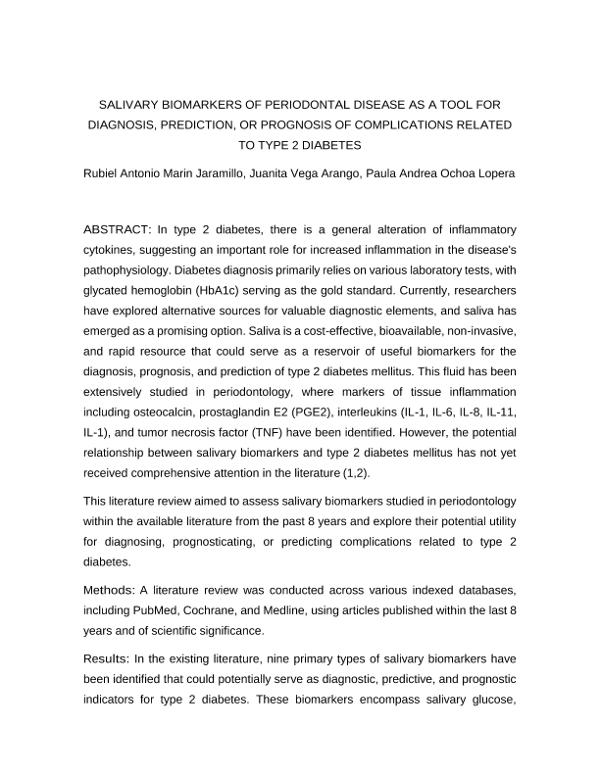Salivary biomarkers of periodontal disease as a tool for diagnosis, prediction, or prognosis of complications related to type 2 diabetes.
Date
2023-11-14
2023-11-14
Author
Marin Jaramillo, Rubiel Antonio
Vega Arango, Juanita
Ochoa Lopera, Paula Andrea
Metadata
Show full item record
Show full item record
Abstract
In type 2 diabetes, there is a general alteration of inflammatory cytokines, suggesting an important role for increased inflammation in the disease's pathophysiology. Diabetes diagnosis primarily relies on various laboratory tests, with glycated hemoglobin (HbA1c) serving as the gold standard. Currently, researchers have explored alternative sources for valuable diagnostic elements, and saliva has emerged as a promising option. Saliva is a cost-effective, bioavailable, non-invasive, and rapid resource that could serve as a reservoir of useful biomarkers for the diagnosis, prognosis, and prediction of type 2 diabetes mellitus. This fluid has been extensively studied in periodontology, where markers of tissue inflammation including osteocalcin, prostaglandin E2 (PGE2), interleukins (IL-1, IL-6, IL-8, IL-11, IL-1), and tumor necrosis factor (TNF) have been identified. However, the potential relationship between salivary biomarkers and type 2 diabetes mellitus has not yet received comprehensive attention in the literature (1,2). This literature review aimed to assess salivary biomarkers studied in periodontology within the available literature from the past 8 years and explore their potential utility for diagnosing, prognosticating, or predicting complications related to type 2 diabetes.Impacto
Collections

